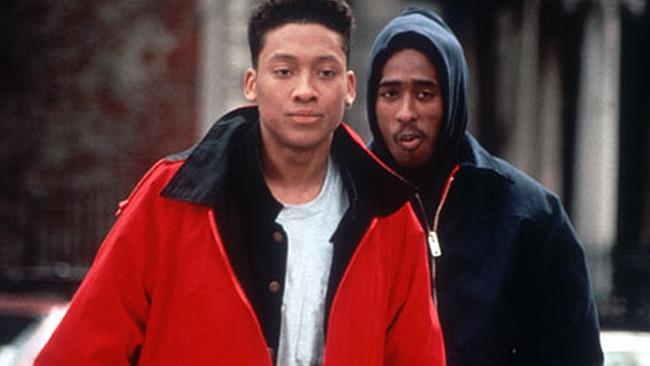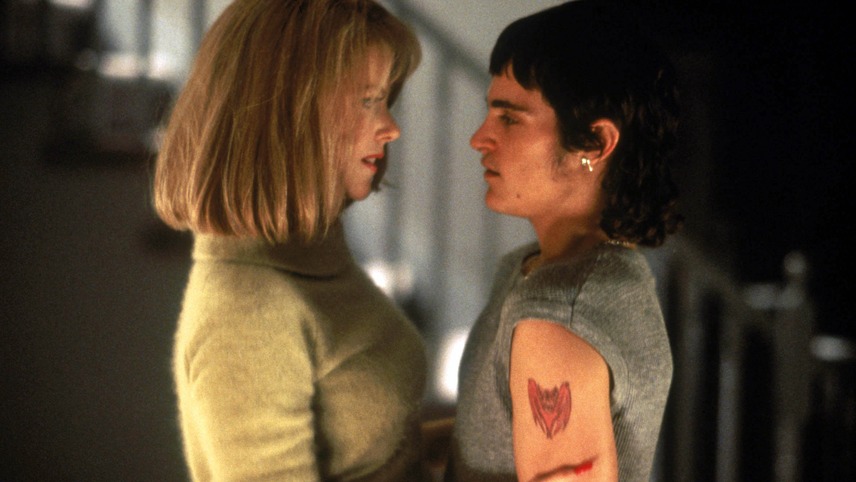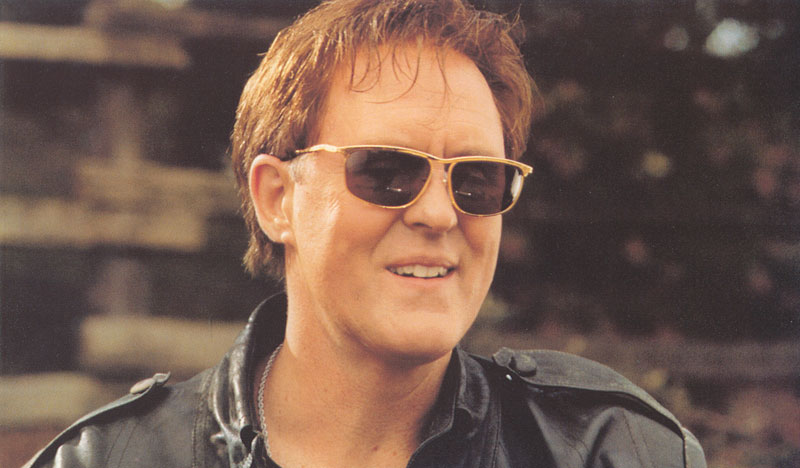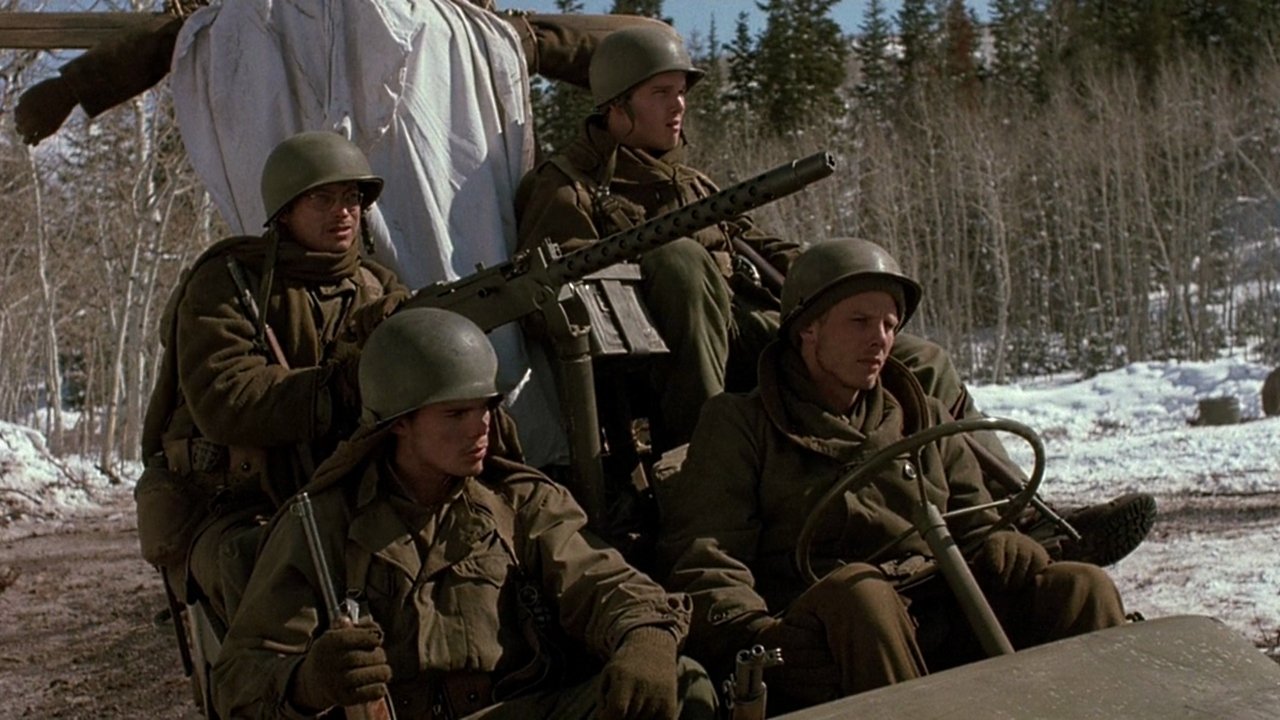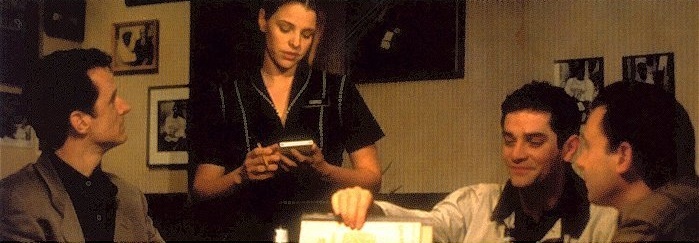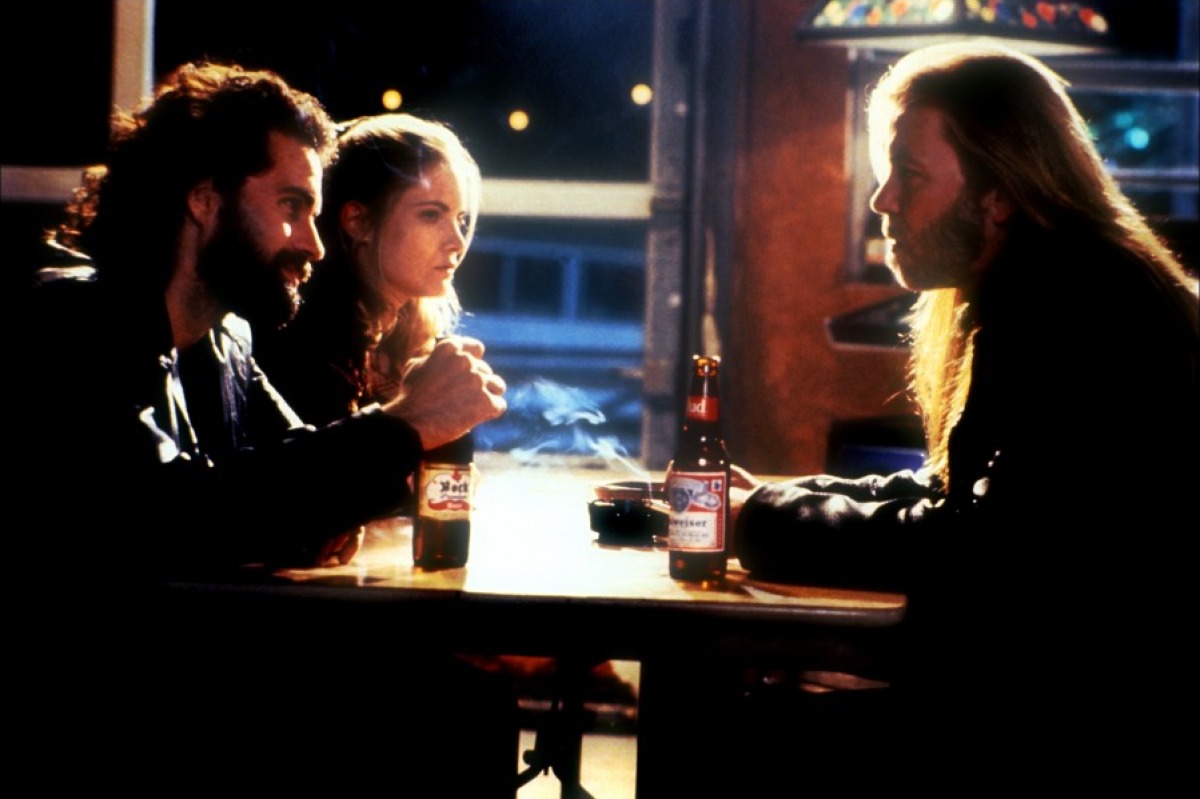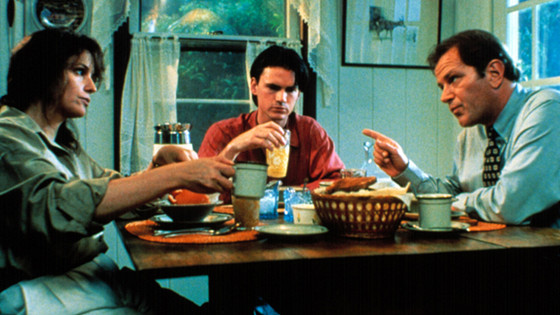10. The Road To Wellville (1994)
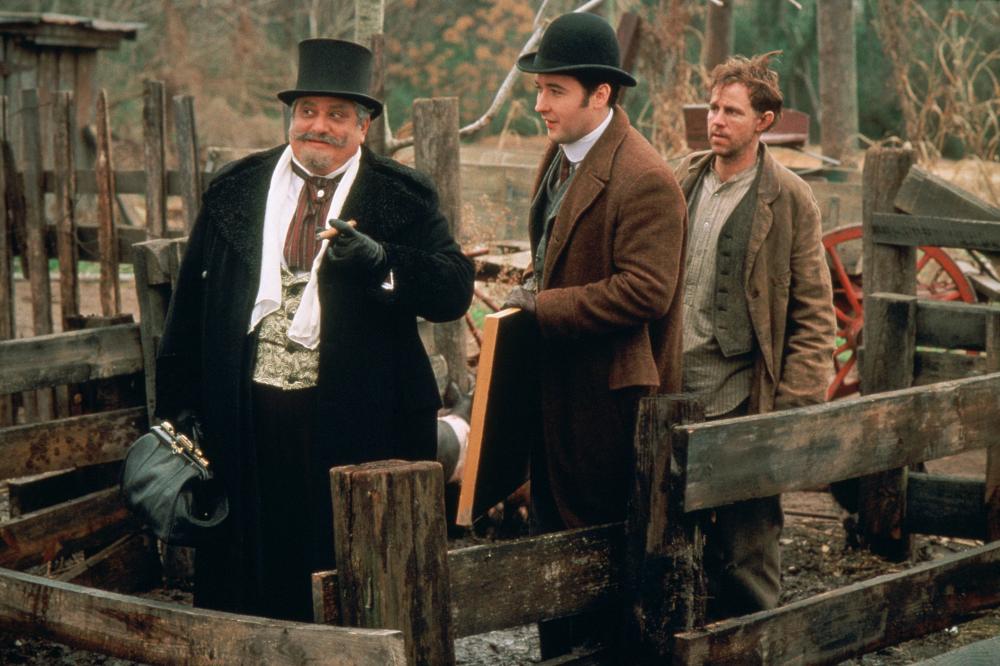
Loosely based on true events, Alan Parker’s film, which centers around a bizarre health facility headed by Dr. Kellogg in the early 1900’s, is one of the most criminally underrated films on this list. In the role of Kellog, Anthony Hopkins gives one of his most inventive and eccentric performances since his first (and only truly great) turn as Dr. Hannibal Lecter in Silence of the Lambs.
Also featuring a fantastic ensemble that includes Matthew Broderick, Bridget Fonda, John Cusack, and (a perfectly cast) Dana Carvey, The Road to Wellville is a strange experience that needs to be seen in order for one to believe that it was ever produced by a major studio. It truly is that odd (and that great) of a film.
9. Juice (1992)
Former Spike Lee cinematographer Ernest R. Dickerson made his directorial debut with this Harlem-set look at inner city life and crime. While a minor success (relative to its low budget) at the time of its release, time has not been kind to this wonderfully crafted, tightly made drama/thriller.
Now overshadowed by such other great and similar films of the time as Boyz N the Hood and Clockers, Juice is a masterfully and powerfully told story that deserves as much (if not more) recognition as it’s more well-known siblings. The late Tupac Shakur gives a fantastic lead debut performance that still leaves one saddened over all the great work that went unaccomplished in his short life.
8. To Die For (1995)
To Die For made a minor splash when it was first released. Critics loved it, praising director Gus Van Sant and star Nicole Kidman as Oscar frontrunners (it didn’t wind up receiving a single nomination). Accolades for the film have since died down significantly, and people seem to have now genuinely forgotten about this brave, scathing satire that is arguably the inconsistent director’s greatest work to date.
Kidman (in the first of a great run of performances to come in her career) plays a lonely housewife who desperately and pathetically aspires to find fame and fortune as a television personality.
When her good-hearted husband (an understated Matt Dillon in one of his more mature and likable performances) appears to stand in her way, she calculatingly manipulates three lost teenagers (a young but always intense Joaquin Phoenix chief amongst them) into murdering him. Once questions arise about her husband’s death, Kidman begins receiving the attention from the media she always dreamt of, and she more than basks in the glow of her sociopathically-attained spotlight.
Undeniably a product of the nineties, To Die For deserves as much recognition today as Natural Born Killers, the much more bombastic and renowned cinematic media satire of the decade. It is a wicked, disturbing, and highly engaging thriller that criticizes and satirizes the emptiness and vanity found at the heart of many Americans’ most desired dreams. Equally comic and horrific, To Die For is far too great of a work of its time to be so easily forgotten about today.
7. Raising Cain (1992)
Brian DePalma is a conundrum, a filmmaker of singular operatic style and beauty, but one who can use it for two almost completely different styles of films. On one hand, DePalma is the cinematic master who gave us Scarface, Carlito’s Way, and The Untouchables.
All these films have a grandiosity in style, a love of graphic violence, and a technical skill and grace that has never quite been topped (and is often heavily “borrowed” by DePalma uber-fanatic Quentin Tarantino). As over the top as they could get, these films were about as accessible as DePalma has ever been to mass audiences in his career.
DePalma’s other, more idiosyncratic cinematic self (perhaps his most personal one) is much less easy for many to gestate. The films on this side of De Palma’s career are often referred to as “Hitchcockian”, but this description paints the filmmaker as an uninspired rip off artist who has nothing original to offer.
The truth, in fact, couldn’t be further from the opposite. De Palma’s strangest, darkest thrillers (Dressed To Kill, Blow Out, and Body Double chief amongst them) are so original and singular in their execution (while openly “borrowing” from the likes of Hitchcock, Coppola, and Antonioni in their stories and screenplays) that it’s actually quite difficult to understand De Palma’s true intentions with them
Raising Cain, in all its insane glory, unquestionably belongs in the latter category of De Palma’s repertoire. It is a kitschy, gorgeous (courtesy of longtime De Palma cinematographer Stephen H. Burhum), and twisted piece of thriller pulp that induces as many gasps as it does giggles. Whether or not De Palma is always in on the jokes his films often appear to tell is open to debate, but you can’t deny the dreamlike (or to some, utterly cheesy) spell they have the ability to put you under with their heightened senses of reality and style.
Brian De Palma, however flawed his work may or may not be, is a true original of American filmmaking. His most stylized work is probably still ahead of its time (or possibly twenty years too late). Raising Cain is almost a collage film pasted together from the director’s favorite past themes: sexual obsession, infidelity, multiple personality disorder, etc.
It succeeds because it fully commits (as does lead John Lithgow, in one of the most gloriously bent roles of his career) to the insanity and absurdity of the events depicted within it. What makes it truly memorable, however, is that it showcases a completely unrestrained and unfettered example of De Palma’s style. The result is a one-of-a-kind film that is equally scary, sexy, funny, surreal, and joyously, utterly ludicrous.
6. A Midnight Clear (1992)
Former eighties star Keith Gordon (Christine, Back to School) directed this harrowing, beautiful adaptation of the William Wharton novel of the same name.
Set at the tail end of WWII during the cease fire call between German and US troops, A Midnight Clear is a beautiful, painfully told story about loss, madness, and identity during wartime. Headed by a great cast that includes Peter Berg, Kevin Dillon, Ethan Hawke, Gary Sinise, Frank Whaley, and John C. McGinley, A Midnight Clear is a wonderfully made and tragically lost classic still waiting for its full time of discovery.
5. Red Meat (1998)
Writer/director Allison Burnett’s film has the prestigious title of being the first film to be purchased by and premiered on the Sundance Channel. You probably didn’t know that, however, because you more than likely never knew Red Meat existed. Without a (at the time) male lead, the film was unable to get a theatrical release, and subsequently suffered from little-to-no attention from audiences and critics after it premiered on the then-obscure cable channel’s lineup.
Red Meat falls into a similar sub-category of films that are headed by Swingers and In The Company of Men (on the light and dark end of the spectrums, of course): men behave badly, philosophize with each other about women in varyingly ignorant and sexist ways, but also manage to entertain us thoroughly and completely by sucking us into their seemingly fun-filled though thoroughly debauched lifestyles.
Red Meat is actually more fulfilling than those two well-known films, however, because it is much more aware of itself and what it’s actually saying. It keeps plenty of the wickedness found at the heart of Neil Labute’s masterful display of overt misogyny that was In the Company of Men, but without drowning in or dwelling on the hyper-reality of its recesses (a fate that often comes with the territory of the dark and disturbing brilliance often found in Labute’s most renowned work).
Unlike Swingers, Red Meat also manages to find truth and genuine heart in its protagonists without contriving an ending or a resolution to their stories. Unlike the exaggerated monsters found in Men or the cuddly monkey boys in Swingers, the misogynists of Red Meat are layered, human, and not so easy to pin down.
The film itself is as deceptive as its characters. The second you start liking or laughing along with them is the second you get smacked in the face with the uncompromising reality of who they truly are and what they represent. The brilliance of Red Meat is that every time you get comfortable with it’s protagonists, the bottom drops out and you’re left to wonder if you ever should have trusted or liked any of them in the first place.
Mad Men’s John Slattery gives a wonderful lead performance that was unfairly lost early in his career. His alpha-male character is every bit as slimy and charismatic as he needs to be in order for you to believe that he’s able to get away with being who he is. James Frain (who was most recently a part of True Detective’s excellent second season ensemble) also gives a strong, subtle, and honest performance as (possibly) the most emotionally advanced member of the trio of men the film centers around.
Red Meat, probably the least known and viewed film on this list, is also one of the most necessary to see because it truly does complete and shed light on a nineties trilogy of films (with the aid of Men and Swingers) that we never quite knew existed or that we wanted.
4. The Opposite of Sex (1998)
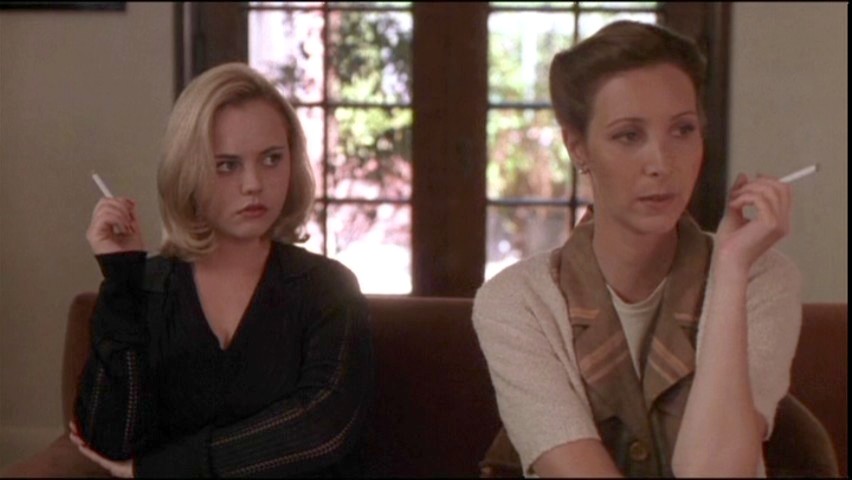
Though it struck it a cord with indie audiences and critics years earlier, today’s audiences have seemed to forget about this sarcastic dark comedy featuring a sarcastic dark lead performance by the mother of nineties cool indifference, Christina Ricci. Playing a Lolita for the times (one completely from hell, of course), Ricci gives the performance of her career to date. Martin Donovan, Lisa Kudrow, and Lyle Lovett also provide excellent support in a perfectly-assembled ensemble cast.
With The Opposite of Sex, writer-director Don Roos made one of the most telling and hilarious product of its times. It tackles many of the big sexual issues of the nineties (homophobia, repression, harassment, etc.) with an intentionally dead pan tone of indifference that is as hilariously present in the mood of the film as it is in Ricci’s outstanding and underappreciated performance. The Opposite of Sex is a great and bitingly hilarious film that audiences need to (re)discover for themselves.
3. Heaven & Earth (1993)
Most of Oliver Stone’s toughest critics in the eighties and nineties (and there were many of them) focused on the common weaknesses in his best-known films (Platoon, Wall Street, Born On The Fourth of July, etc.): they’re men’s clubs that don’t understand women (much less how to accurately depict them), they have terribly slanted points of views that often fall into the category of “arrogance”, and they are often far too blunt and on-the-nose with the messages they’re trying to convey.
Well, one can assume Stone listened to those criticisms and took them to heart when he was making Heaven & Earth, which is easily the most sensitive and thoughtful film of the audacious filmmaker’s career. Critics and audiences simply weren’t listening to him this time around, however, as Stone and his film were unjustly ravaged in the press and quickly thrown aside.
The controversial filmmaker would have to lose himself in a total saturation of nineties sex and violence with Natural Born Killers in order to start making national headlines with his work again. Stone gave the critics what they pretended to want with Heaven & Earth, but ultimately only proved their hypocrisy by not getting their attention until he (essentially) “misbehaved” again by loudly satirizing and exploiting all the excesses he could imagine, both in himself and in the world as he saw it.
Unlike his early Vietnam War dramas (Platoon and July), Heaven & Earth takes on a risky and challenging point of view by looking at the war through not only the Vietnamese perspective, but also through a feminine one. The film is based on the true story of Le Ly Hayslip (played with striking commitment and vulnerability by non-actress Hiep Thi Le), as it follows her through her hellish years spent in wartime Vietnam to a whole new type of hardship after she moves to a post-war America.
The film is empathetic to views and values not commonly seen in American films, and its lack of success (and current-day recognition) is quite telling to how closed off the nation’s attitude is to films with foreign points of view.
Told with Stone’s cinematic power and brilliance, Heaven & Earth will hold up in quality for years to come. Almost too open-minded for the time of its theatrical release, the film needs a new audience to rediscover and celebrate its power, beauty, and bravery. However flawed his films can be, there is no other filmmaker around who can match Stone’s commitment to all three of those qualities when he is at his best and in his element as he is with Heaven & Earth.
2. Rush (1991)
Jason Patric and Jennifer Jason Leigh were two of the most committed, intense, electric, and horribly underappreciated actors of the nineties (and both somehow manage to continue to be to this day). It’s only natural that their onscreen collaboration, Rush, would be one of the most painful and jagged depictions of drug addiction ever put on film. A great deal of the film’s success, needless to say, is due to the commitment and talent of its two strikingly gifted leads.
Rush centers around two undercover narcotics officers (Patric and Leigh) who fall hard for each other and then fall even harder into the drugs they too easily forget they’re trying to stop. The only attention the film, which was wonderfully directed by producing bigwig Lili Fini Zanuck, garnered was due to its accompanying (and Oscar-winning) Eric Clapton tune, “Tears in Heaven”.
Unfortunately, the film that classic song was released with never got the same notice or respect it needed to enjoy the same success. Rush, probably too dark and unrelenting for mainstream audiences at the time, certainly needs a resurgence of interest today to make up for this great film’s time lost in obscurity.
1. Spanking The Monkey (1994)
It’s hard to remember, but there was a time when David O. Russell’s films weren’t top Oscar contenders on a near-yearly basis. When his career started with the dark independent incest comedy, Spanking The Monkey, he was just another weirdo indie director (like Todd Solondz, perhaps) who was making movies about things no one wanted to talk about, but that a select few loved to see portrayed on movie screens.
Russell’s career, thematically, only got brighter and more accessible from there, while Solondz, somehow, found a way of just getting darker and darker with each new film he released over the years (and they both deserve the same amount of respect for it).
Spanking The Monkey stars the great oddball Jeremy Davies as a sexually frustrated and socially awkward college kid who has to suspend his studies to take care of his injured mother. Meanwhile, his philandering father continues his constantly-traveling and seemingly-carefree lifestyle. Davies barely survives the return to his dysfunctional home and is eventually so consumed with depression and desperation that he resorts to starting an affair with his alcoholic mother. Needless to say, things only get worse from there.
Russell’s audacity and his unparalleled gift for getting the best, most intense work from his actors shone early on in Spanking The Monkey. What the film has that his later work lacks (or more, accurately, grew out of) is an alienated sense of anger that also plagues its main character. Spanking The Monkey isn’t particularly developed in style or technique, but what it has to spare is raw, irreplaceable emotion that can be found in everything from the camerawork to the performances.
Russell’s maddened (and for this film, undeveloped) energy permeates Spanking The Monkey at its pores. It is a living, breathing broken bone of a movie that fits perfectly into the-then popularly explored and pondered theme of extreme family dysfunction. It didn’t exactly cause a movement or much notice beyond respect for the debuting and obviously talented writer-director, but Spanking The Monkey was quietly and brilliantly a perfect film for its times.
Russell’s work in Spanking The Monkey will more than likely never be duplicated by the filmmaker. That’s probably because it shouldn’t be. There is an energy and a rage to Monkey that only a first time filmmaker can fully grab onto without letting it consume him or her. Russell got an ugly mess out of system with his first film.
While his work has been plenty (though in varying degrees) challenging and brilliant since, Spanking The Monkey was lightning in a bottle: something Russell would never catch again, but also something he’d never potentially burn himself on again, either. Regardless, Spanking The Monkey is brilliant, unmatched, and far too unknown and lost on today’s audiences.
Author Bio: Matt Hendricks is an independent filmmaker with several projects currently in development.
